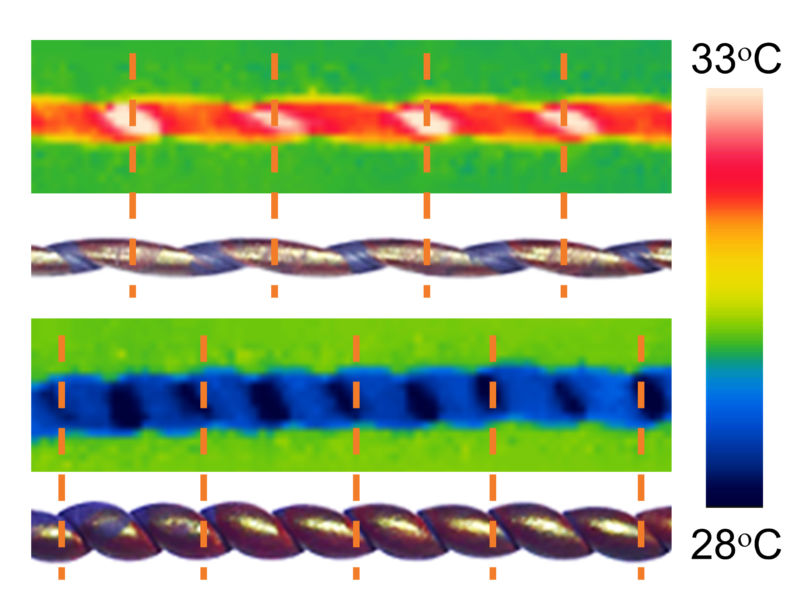What if your refrigerator cooled your food by twisting wires?

Enlarge / Thermal images show how stretching twisted rubber causes its temperature to change. (credit: Wang et al./Science)
Although some manufacturers have attempted to spice up refrigerators with an Internet-of-Things capacity, few of us have found automatic egg-inventory-tracking notifications a compelling upgrade. So are any real technological revolutions possible for this humble home appliance?
A team of researchers led by Nankai University's Run Wang and the University of Texas at Dallas' Shaoli Fang certainly thinks so. They're not thinking about the front of the fridge, though-for them, the party is in the back. They're looking to replace compressed gas coolants with a twisted solid.
It's solidRefrigerators have long run on a vapor-compressor design that uses circulating coolant to pump heat energy out of the fridge and into your kitchen. At this point, we've pretty much maxed out the potential energy efficiency of that design, which isn't ideal. Also not ideal is the fact that the coolants used are not without problems if they leak-problems range from health hazards to a history of ozone depletion to their behavior as greenhouse gases.
Read 11 remaining paragraphs | Comments